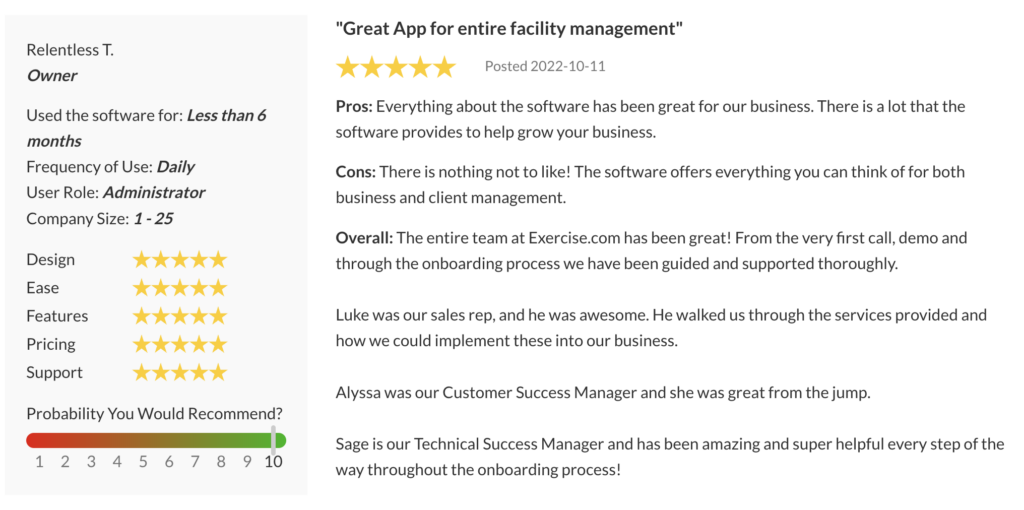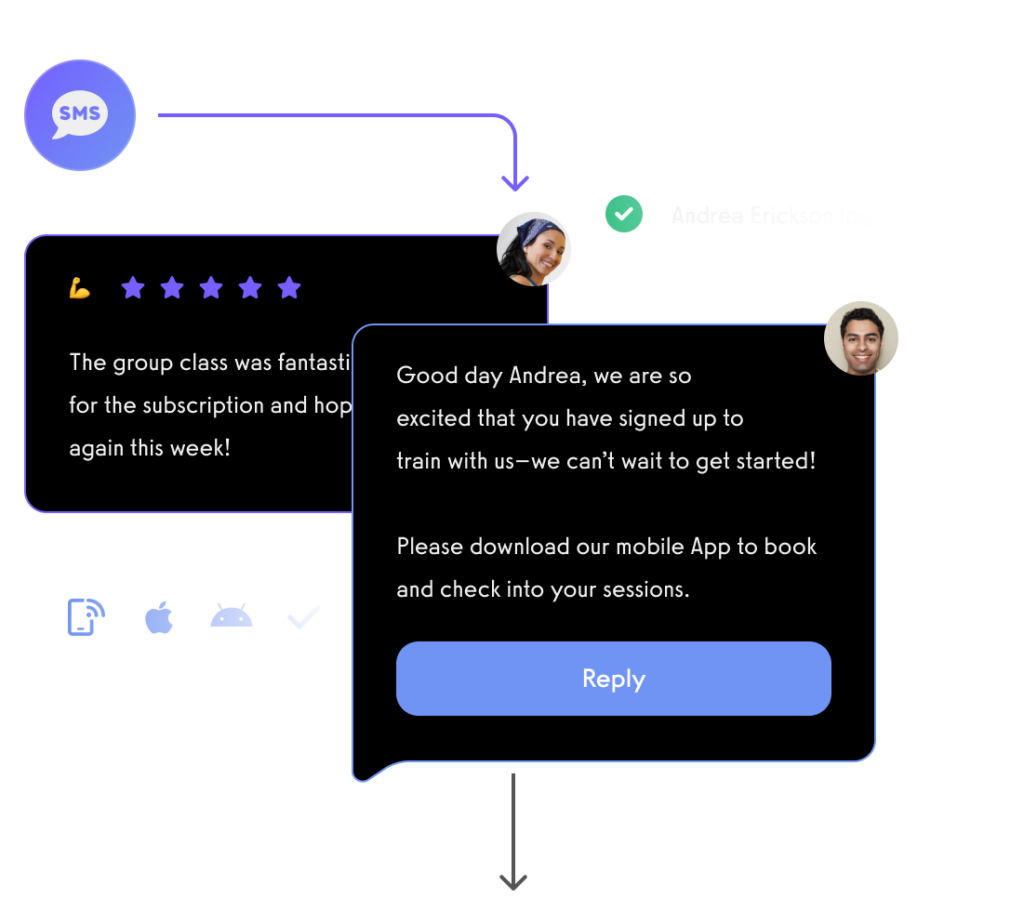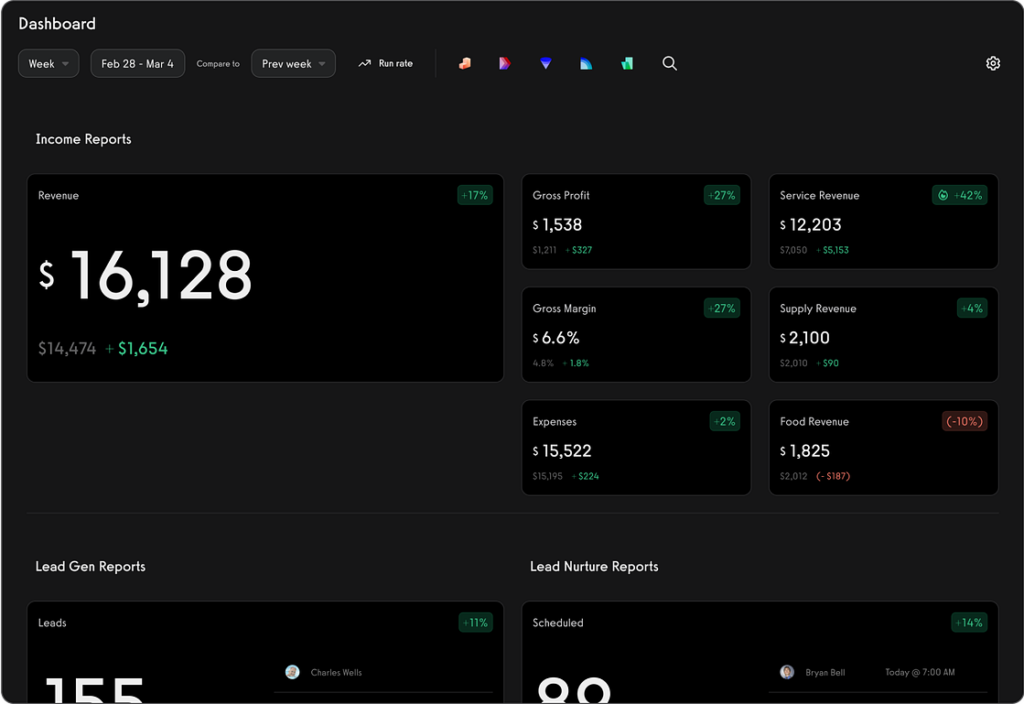How to Choose a Target Market for Your Gym Business
Learn how to choose a target market for a gym business, and then by identifying and focusing on a specific audience, you can tailor your offerings, marketing strategies, and services to meet their unique needs and preferences.

Discover the target market for fitness gyms. Read about the demographics, psychographics, geographic location, and niche markets that drive gym-goers so you can learn how to choose a target market for your gym business. The best fitness gym target market choice depends on many factors; read this guide to find the best target market for a fitness gym that fits your gym and your market opportunity.
Choosing a target market is a crucial step in running a successful gym business. In this step-by-step guide, we’ll walk you through the process of choosing a target market for your gym business, allowing you to maximize your gym’s potential and reach your desired gym target audience by putting your gym marketing ideas into action with a solid gym marketing plan. With Exercise.com’s comprehensive gym management software, you can streamline operations, sell workout plans and nutrition services, track workouts, schedule personal training, and more, to support your target market strategy effectively.
Then to capitalize on this gym business target market opportunity, enlist the power of the best gym management software platform to manage and grow your entire gym in one place. Don’t miss out on the platform growing gyms use to do more, better.

And as our reviews from gym owners attest, we love gym owners and they love us. Read our gym owner guide and then see why our gym software has gym owners raving (get a free demo here).

Create workout plans with a workout plan creator.

Communicate with gym members, leads, and online followers via SMS, email, and in-app push notification.

And of course, view all of your gym business reports easily too.

All from your custom-branded fitness apps (Read More: Best Gym Mobile Fitness Apps Software)

You can grow your business by selling workout plans, using our white label fitness app builder software and much more.

Steps to Choosing a Gym Target Market
The fitness industry has grown tremendously, with new gyms opening up all across the country and more people joining them than ever before. But with such a large and growing market, how do you identify the target market for a gym? Here’s how to choose a target market for your gym business.
Step 1: Conduct Market Research
- Research the local market and competition to identify potential gaps and opportunities.
- Analyze demographic data, such as age, income levels, and lifestyle preferences, to gain insights into the target market’s characteristics.
- Utilize Exercise.com’s top notch gym member management software with communication features to gather data and understand your potential target market better.
Step 2: Define Your Gym’s Unique Selling Proposition (USP)
- Determine what sets your gym apart from competitors. Is it your specialized equipment, experienced trainers, or personalized workout plans and nutrition services?
- Identify the key benefits your gym offers to potential clients and how it addresses their fitness needs.
- Leverage Exercise.com’s custom branded fitness apps to showcase your unique selling proposition and engage with your target market effectively.
Step 3: Identify Specific Customer Segments
- Based on your research, divide your target market into specific segments. For example, you may consider segments such as fitness enthusiasts, busy professionals, seniors, or athletes.
- Determine which segments align best with your gym’s strengths and unique offerings.
- Utilize Exercise.com’s customer segmentation tools to categorize your clients and develop tailored services and marketing campaigns. Use the powerful fitness automations to streamline your work.
Step 4: Evaluate Market Size and Potential
- Assess the size and growth potential of each identified customer segment.
- Consider factors such as population density, local demand for fitness services, and trends in the fitness industry.
- Use Exercise.com’s analytics and reporting features to analyze market data and identify growth opportunities within your target market.
Step 5: Analyze Competition
- Research and analyze the competition targeting the same customer segments.
- Identify their strengths, weaknesses, pricing strategies, and unique offerings.
- Leverage Exercise.com’s gym management software to monitor the competition, track market trends, and differentiate your gym effectively.
Step 6: Consider Your Resources and Expertise
- Evaluate your gym’s resources, expertise, and ability to cater to specific customer segments.
- Assess the availability of qualified trainers, facilities, equipment, and other resources needed to meet the needs of your target market.
- Utilize Exercise.com’s scheduling and management tools to optimize resource allocation and provide exceptional services to your target market.
Step 7: Refine Your Target Market
- Based on the analysis of market research, competition, and available resources, refine and narrow down your target market.
- Focus on segments that align with your gym’s unique strengths and have the most growth potential.
- Utilize Exercise.com’s communication features to engage with your target market, address their needs, and provide personalized fitness solutions.
Choosing a target market for your gym business is a strategic process that requires careful analysis, research, and evaluation. By defining your unique selling proposition, identifying specific customer segments, and leveraging Exercise.com’s comprehensive gym management software, you can effectively target and attract your desired audience.
With Exercise.com, you can streamline operations, sell workout plans and nutrition services, track workouts, schedule personal training, and more, to support your target market strategy and ensure the long-term success of your gym business.
Ready to learn more?

Fitness Gym Target Market Ideas
Here is a list of key segments that can be included in a fitness gym market segmentation report along with a brief summary of each. Use these to decide which target market you should focus on in your gym. Remember, to appeal to everyone is to appeal to no one!
- Age-Based Segmentation: Dividing the market based on age groups such as millennials, Gen X, baby boomers, and seniors, to understand their unique fitness needs and preferences.
- Gender-Based Segmentation: Segmenting the market based on gender to cater to the specific fitness goals and interests of men and women.
- Fitness Level: Segmenting based on fitness levels, including beginners, intermediate, and advanced, to offer appropriate programs and training options.
- Goal-Oriented Segmentation: Dividing the market based on specific fitness goals such as weight loss, muscle building, athletic performance, or general health and wellness.
- Lifestyle Segmentation: Segmenting based on lifestyle factors such as busy professionals, stay-at-home parents, or retirees, to design programs that fit their schedules and priorities.
- Location-Based Segmentation: Dividing the market based on location, such as urban, suburban, or rural areas, to adapt offerings to the local demographic and competition.
- Socioeconomic Status: Segmenting based on income levels, education, and occupation to target different market segments with appropriate pricing and services.
- Family-Focused Segmentation: Targeting families or parents with specific programs and facilities catering to both children and adults.
- Health Conditions: Segmenting based on health conditions like diabetes, arthritis, or cardiovascular issues, to provide specialized programs and support.
- Sports-Specific Segmentation: Segmenting based on specific sports interests such as tennis, soccer, or swimming, to offer sport-specific training and facilities.
- Group Exercise Preference: Segmenting based on preferences for group exercise classes, such as yoga, spinning, Zumba, or high-intensity interval training (HIIT).
- Personal Training: Segmenting based on the demand for one-on-one personal training services, catering to those seeking individualized attention and support.
- Tech-Savvy Segment: Targeting individuals who embrace technology and prefer fitness tracking devices, virtual workouts, and app-based training programs.
- Wellness and Mindfulness: Segmenting based on consumers who prioritize holistic wellness, including yoga, meditation, and wellness workshops.
- Seniors and Silver Sneakers: Focusing on older adults and providing specialized programs, low-impact exercises, and social activities.
- Students and Young Adults: Targeting students and young adults with flexible membership options, student discounts, and programs that align with their lifestyle and budget.
- Corporate Wellness: Offering corporate wellness programs and partnerships with companies to target employees looking for on-site fitness facilities and programs.
- Medical Rehabilitation: Partnering with medical professionals and targeting individuals who require post-injury or post-surgery rehabilitation programs.
- Time-Conscious Segment: Catering to individuals with limited time by providing express workout options, shorter classes, or 30-minute high-intensity sessions.
- Body-Positive and Inclusive Segmentation: Focusing on creating a welcoming and inclusive environment for individuals of all body shapes, sizes, and abilities.
Note: The specific segments included in a market segmentation report will vary based on the gym’s location, target market, and unique offerings. These segments provide a starting point for analysis and targeting within the fitness gym industry.
The Importance of Identifying Target Markets for Gyms
Target markets are key for a gym’s success for several reasons:
- Relevance: By identifying a specific target market, a gym can tailor its offerings to meet the needs and preferences of that particular group. Understanding the target market’s demographics, fitness goals, and interests allows the gym to provide relevant services, programs, and amenities. This relevance increases the likelihood of attracting and retaining members who are more likely to engage with the gym’s offerings.
- Effective Marketing: When a gym knows its target market, it can develop more focused and effective marketing strategies. By understanding the target market’s preferences, challenges, and motivations, the gym can create targeted messages and campaigns that resonate with potential members. This targeted approach maximizes marketing efforts, reaching the right audience with the right message at the right time.
- Differentiation: Identifying a target market helps a gym differentiate itself from competitors. By understanding the unique needs and preferences of the target market, a gym can develop specialized services or programs that set it apart from other generic fitness facilities. This differentiation attracts members who are specifically seeking the offerings that align with their goals and interests.
- Member Satisfaction: When a gym caters to a specific target market, it can provide a more personalized and tailored experience. This leads to higher member satisfaction as members feel that their needs are being met and their goals are being addressed. Satisfied members are more likely to stay loyal, refer others, and contribute positively to the gym’s reputation.
- Financial Success: Targeting a specific market allows a gym to optimize its resources and investments. By focusing on a particular demographic, the gym can allocate resources more effectively, whether it’s in equipment selection, staffing, or marketing campaigns. This targeted approach improves cost-efficiency and contributes to the gym’s financial success.
Choose Your Gym’s Target Market
Understanding and targeting a specific market is essential for a gym’s success as it allows the gym to provide relevant offerings, develop effective marketing strategies, differentiate from competitors, enhance member satisfaction, and optimize financial resources. By catering to the specific needs and preferences of the target market, a gym can establish a strong brand identity, attract the right members, and thrive in a competitive fitness industry.
In such a competitive market, it is crucial for gym owners to identify their target markets accurately. Learning how to find a gym’s target markets helps gyms create relevant marketing campaigns and tailor their services to meet the needs of specific groups of people.
For example, young adults between the ages of 18-34 are more likely to join a gym due to factors such as having disposable income and wanting to maintain their physical appearance. Meanwhile, middle-aged adults between 35-54 tend to join gyms for health reasons such as preventing chronic diseases or reducing stress levels.
By understanding these motivations behind joining a gym, gym owners can create targeted marketing campaigns that will resonate with potential members. Avoiding generic messaging is essential because it does not speak to anyone’s particular needs or desires when it comes to fitness; therefore, keeping the message focused and tailored towards specific groups can better ensure that potential members feel seen and heard by the gym they ultimately choose.
Identifying target markets also helps gyms differentiate themselves from competitors by offering specialized programs catering specifically towards different age groups or fitness level individuals. For example, some gyms cater exclusively to seniors looking for low-intensity workouts while providing socialization opportunities creating another niche market segment from which they can generate revenue.
The fitness industry has seen tremendous growth in recent years, and it is essential for gym owners to identify their target markets accurately to remain competitive. By understanding the motivations behind joining a gym, gym owners can create marketing campaigns that resonate with potential members, avoid generic messaging and differentiate themselves from competitors by offering specialized programs.
With Exercise.com, you can streamline operations, sell workout plans and nutrition services, track workouts, schedule personal training, and more, to support your target market strategy and ensure the long-term success of your gym business.
Ready to learn more?

What is the target market for fitness gyms?
The target market for fitness gyms encompasses individuals of all ages who are seeking to improve their physical fitness and overall well-being. This includes people who want to lose weight, build muscle, enhance athletic performance, or simply maintain a healthy lifestyle. Exercise.com understands the diverse needs of the target market for fitness gyms and provides gym management software that allows gyms to tailor their services, offer personalized workout plans, track progress, and provide nutrition services to cater to the specific goals and preferences of their target market.
What is a good target market for gyms?
A good target market for gyms depends on various factors such as location, facilities, and specialized offerings. One potential target market could be busy professionals who value convenient and efficient workouts. Another could be seniors who seek low-impact exercises and specialized programs. Exercise.com recognizes the importance of identifying a suitable target market and offers gym management software that allows gyms to analyze customer data, segment their target market, and customize their services to meet the specific needs and preferences of their chosen target market.
What is the target market age for gyms?
The target market age for gyms can vary depending on the gym’s focus, location, and offerings. Gyms typically attract individuals ranging from teenagers to older adults. However, it’s important to consider that different age groups may have different fitness goals and requirements. For instance, younger individuals may focus on building strength and athletic performance, while older adults may prioritize exercises that improve mobility and overall health. Exercise.com’s gym management software can assist in identifying the target market age for gyms by providing data analysis tools and customer segmentation features, enabling gyms to customize their services and offerings accordingly.
What are the demographics of fitness customers?
The demographics of fitness customers can be diverse, encompassing individuals from various age groups, genders, occupations, and socioeconomic backgrounds. Fitness customers can include students, professionals, parents, seniors, athletes, and more. The demographics of fitness customers may also vary based on the location and focus of the gym. Exercise.com understands the importance of recognizing the demographics of fitness customers and provides gym management software that enables gyms to gather and analyze customer data, segment their customer base, and tailor their services to better meet the needs of their specific demographics.
Why are target markets important for fitness gyms?
Target markets are important for fitness gyms because they help gyms focus their efforts and resources on a specific group of individuals who are most likely to benefit from their offerings. By identifying a target market, gyms can develop customized services, tailored marketing campaigns, and specialized programs that meet the unique needs and preferences of their chosen audience. This targeted approach allows gyms to attract and retain loyal customers, enhance customer satisfaction, and differentiate themselves from competitors. Exercise.com recognizes the significance of target markets and provides gym management software that assists gyms in identifying, analyzing, and serving their target markets effectively.
What do customers want from a gym?
Customers want a gym that provides a welcoming and inclusive environment, state-of-the-art equipment, knowledgeable and supportive staff, a variety of fitness programs and classes, flexible membership options, convenient operating hours, and personalized services. They seek a gym that helps them achieve their fitness goals, offers engaging and motivating workout experiences, and provides resources such as nutrition services and tracking tools to monitor their progress. Exercise.com understands what customers want from a gym and provides gym management software that enables gyms to offer personalized workout plans, nutrition services, online booking, progress tracking, and effective communication tools to enhance the customer experience and meet their expectations.
How can Exercise.com help my gym business serve my target market?
Exercise.com can help your gym business serve your target market by providing comprehensive gym management software that supports personalized workout plans, nutrition services, online booking for classes and personal training sessions, progress tracking, and effective communication with your clients. With Exercise.com’s software, you can customize your services to align with your target market’s preferences and goals, deliver a seamless customer experience, and efficiently manage your gym operations. By utilizing Exercise.com’s tools and features, you can better serve your target market, increase customer satisfaction, and drive the success of your gym business.
How do you identify the gym target audience for your fitness business?
Identifying the gym target audience is crucial for the success of your fitness business. Start by analyzing the demographics of gym members in your area, including age, gender, income level, and fitness preferences. Understanding the target market of gym helps in tailoring your services and marketing efforts effectively. Exercise.com can assist in this process by providing tools to analyze member data and preferences, helping you make informed decisions about your target audience.
What factors should be considered in demographic segmentation for a gym?
When considering demographic segmentation for a gym, factors like age, gender, occupation, and lifestyle should be taken into account. This segmentation helps in understanding the fitness target audience and tailoring services to meet their specific needs. For instance, a gym targeting young professionals might focus on high-intensity classes and flexible hours, while one targeting seniors might offer more low-impact, health-focused programs.
How can a gym business determine its target market for fitness equipment and services?
To determine the target market for fitness equipment and services, conduct a market analysis for your gym business plan. This involves researching fitness market segmentation and understanding the needs and preferences of potential members. Consider the target market for fitness centers and target market for fitness equipment in your area. Are they more inclined towards high-tech equipment, or do they prefer traditional workout methods? Exercise.com can provide insights and tools to help you analyze market trends and member feedback, shaping your equipment and service offerings.
What is the importance of understanding the fitness target market for gym businesses?
Understanding the fitness target market is vital for gym businesses to ensure they meet the expectations and needs of their members. It involves identifying the target audience for gym and target audience for fitness apps, which can vary significantly. For example, the fitness center market might be more interested in holistic wellness programs, while the target audience for fitness apps might seek more technology-driven fitness solutions. Exercise.com can help in aligning your business strategies with the needs of your target market, ensuring better member retention and satisfaction.
How can gym demographics and targeting strategies impact gym marketing?
Gym demographics and targeting strategies have a significant impact on gym marketing. By understanding gym targeting and gym demographics, you can create more effective marketing campaigns that resonate with your target audience. This might include personalized email marketing, targeted social media ads, or community events that appeal to your specific demographic. Exercise.com’s platform can aid in creating and implementing these targeted marketing strategies, ensuring they are data-driven and effective.











